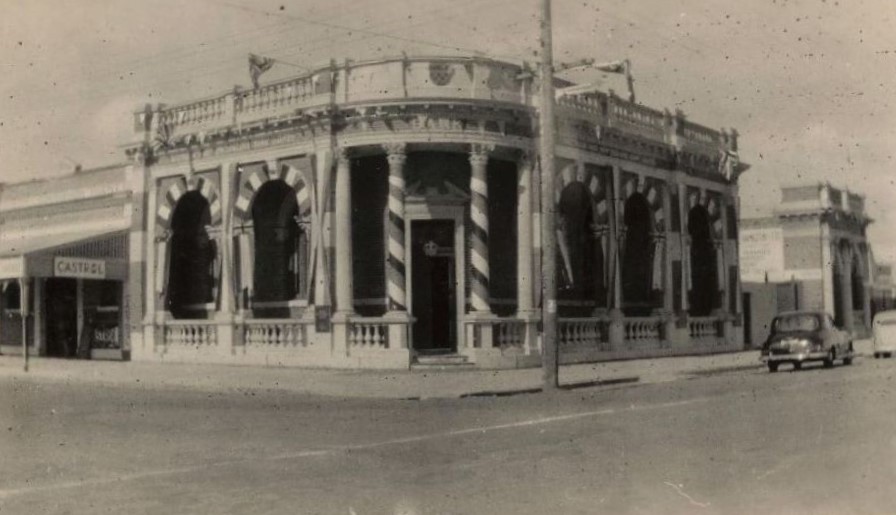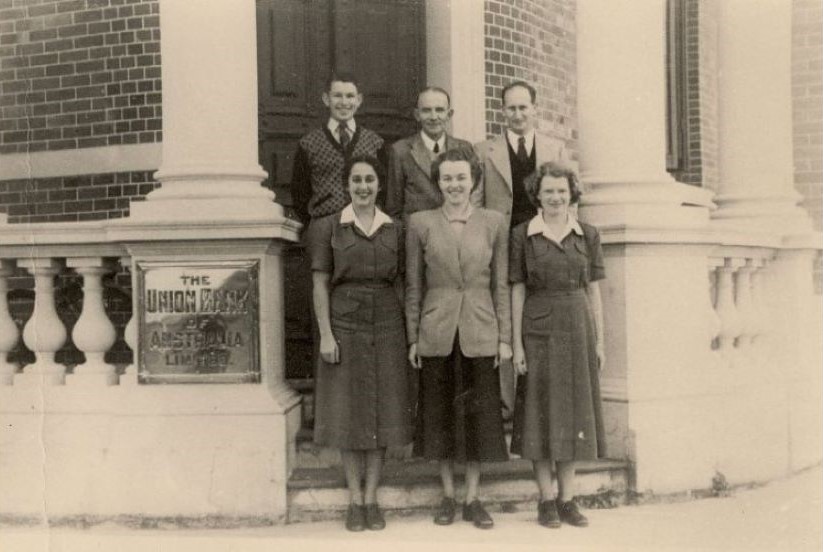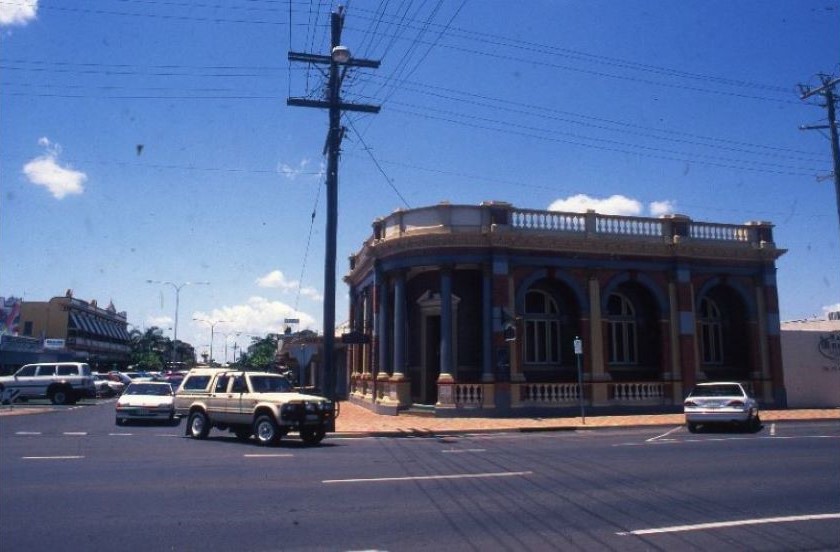
The first Bundaberg branch of the Union Bank of Australia was opened in November 1883 in Bourbong Street but moved to its renowned position on the corner of Targo and Quay Streets in 1914.
The building was designed by the prominent Bundaberg architect F. H. Faircloth and is listed among Bundaberg Regional Council’s local heritage places.
He was also responsible for the reconstruction of the Queensland National Bank in Maryborough which shows several similar style elements to the Union Bank, including the use of face brick, Corinthian columns and Italianate parapet.
The Union Bank building was constructed on Quay Street, which was the principal financial section of Bundaberg’s Central Business District due to its location across from the wharves on the Burnett River.
It was also located directly opposite the Queensland National Bank building, a common feature of ‘Quay Streets’ in Queensland.
In 1951, after a merger with the Bank of Australasia, Union Bank became known as the Australian New Zealand Banking Corporation (ANZ) and in 1970 merged with the English, Scottish and Australian Bank (ESA).
For a period the building served as the offices of L. Midgley, Real Estate and in October 1987, opened as The Old Bank Restaurant.
The site is currently home to Spicy Tonight Thai and Indian Restaurant.

Historic architecture
The footprint of the building, including extensions and associated structures on the western side, extends over the entire lot.
A single storey, masonry amenity block joins onto the building in the northwest and extends to a small, gated laneway that abuts the western boundary and leads past the neighbouring lot to a car park to the south of the site.
The former bank building consists of a rectangular double storey brick structure with a corrugated iron clad Dutch gable roof concealed by a parapet.
The northern and eastern street elevations are face brick, while the western and southern elevations are rendered.
The street façades are fronted by colonnades and divided into four main parts, each separated by straight pilasters with squared profiles (rectangular on the corners).
There are two sections facing Quay Street, a corner section housing the main entrance and one section facing Targo Street.

The colonnades consist of moulded arches with pronounced key stone and are set in face brick wall segments separated by rendered pilasters with square profile on decorative rendered plinth and finishing in ornate Corinthian capitals.
Curved Italianate balustrades with balusters are set in between the pilasters and there are two arches on Targo Street and three on the Quay Street frontage.
The pilasters support a decorative entablature, featuring mouldings and dentils, surmounted by an ornate Italianate parapet consisting of a combination of face brick and rendered columns and decorative balusters.
The entablature was originally face brick and featured the lettering ‘THE UNION BANK OF AUSTRALIA LTD’ on both street frontages, however, the lettering is missing and the bricks are painted in most parts.
At the curved entrance section on the corner, the entablature and parapet are supported by four smooth Corinthian columns with elaborate capitals resting on plinths integrated into a balustrade mirroring the sides.
The lettering ‘BANK’ is located on the entablature, which is face brick, and the parapet shows three rendered panels instead of balusters.
The building’s façade consists of a darker variety of face brick than in the colonnade section.
The ceiling of the colonnade section is lined with pressed metal and the floor is concrete with an inlaid mosaic at the entrance door.
There are five arched windows with moulded architrave as well as keystone and lead lighting in the upper panels.
Access is via a tall timber and glass door set in a moulded architrave and surmounted by a moulded broken pediment.
Internally, many original features are extant, including pressed metal ceiling with ceiling roses, architraves and skirting boards as well as electrical fixtures.





i just stumbled across a QSA file, something to do with a pending visit. the grand stand is mentioned. the year, 1953, so i will get this file to see what is in it. sadly though, the grand stand has gone.